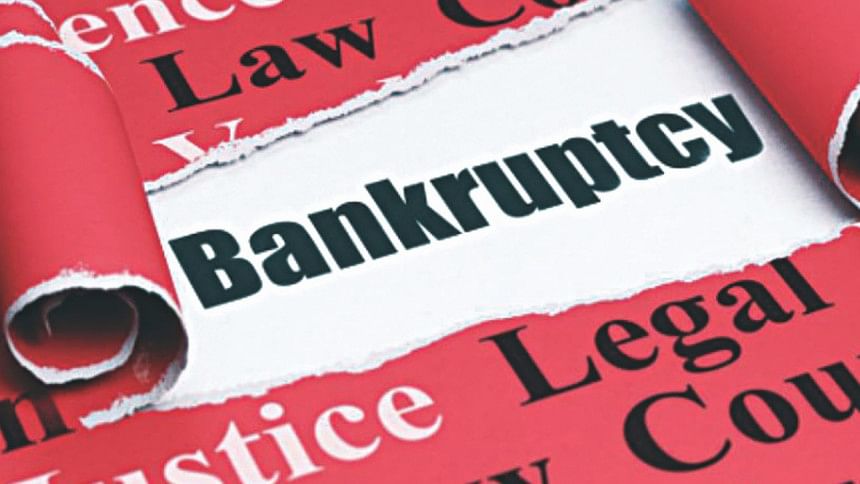Has the Bankruptcy Act, 1997 lived up to its expectation?

In ancient Roman society, bankrupt/insolvent persons were considered as criminals and with sovereign assent they were cut into pieces and threw away in the sea, their wives and children used to be sold as slaves. The creditors used to rob and vandalise the properties of the debtor to realise their claims. As time went on, such attitude of the earlier societies started changing and by 18th Century, it was considered that to become a bankrupt/insolvent should not be considered as crime and such condition in life may happen to any person, and it is also a probability and part of social milieu. In the first part of 19th Century, across the world, in different legal systems, we noticed series of enactment of laws on bankruptcy/insolvency based on the principles of 'humanity' to redress such situation in a more humane way.
Bangladesh being a part of the then British-India, principles of common law assimilated into our legal system and Bangladesh also inherited the Presidency Towns Insolvency Act, 1909 and the Provincial Insolvency Act, 1920 and the said Acts remain enforceable until 1997, when the Bankruptcy Act, 1997 was enacted in Bangladesh, thereby repealing the above two laws. Preamble to the Bankruptcy Act, 1997 without assigning specific reasons for such enactment only provided that such a law is expedient relating to management of bankruptcy issues in Bangladesh. It brought legal entities/companies within its ambit and also established new Courts in the name of 'Bankruptcy Courts' to expedite bankruptcy proceedings as well as to facilitate recovery of debts of creditors in general. One of the reasons of such new enactment was that during mid-nineties, there grew a 'loan defaulting culture' within the business community in not paying back the borrowed loan amount and eating up and annihilating public money, thereby having an adverse effect on the capital market.
The basic idea behind such enactment was not only to encompass legal entities within the scope of law to enable creditors to have action for recovering their claims apart from winding-up procedure of such companies under the Companies Act, 1994, but also to serve the purpose of a 'recovery law' to facilitate fast recovery of defaulted loan and to get rid of the loan defaulter's culture. Strange though, the earlier Acts of the then British-India (as mentioned above) continue to remain in force both in India and Pakistan until 2016 and till date respectively. But as things went on from the enactment of Bankruptcy Act 1997, it was found that the same could not become successful as a recovery law to facilitate realisation of public money from unscrupulous business persons/entities and failed as such, for more than 85% orders/decisions of the newly established Bankruptcy Courts were challenged before High Court Division of the Supreme Court of Bangladesh under revisional jurisdiction and were stayed as data stands, thereby frustrating purpose of early loan recovery. Thus, the Government had to resort to enact a new recovery law called the Money Loan Courts Act, 2003 to overcome the aforesaid difficulties and to facilitate banks and non-banking financial institutions to overcome and bail out. In fact, study and research reveal that more than 90% of commercial banks and financial institutions (who are considered vulnerable in terms of loan defaulting culture so far realisation of debts is concerned) prefer to sue under the Money Loan Courts Act, 2003 instead of having recourse under the Bankruptcy Act, 1997. Therefore, the issue remains whether at all, the Bankruptcy Act, 1997 was necessary (to replace the earlier laws) or it was a mere a futile exercise on part of the Government machinery having burdened the Government exchequer, since in the other parts of Indian sub-continent were comfortable with the old laws.
It is only obvious that provisions of law need to be amended or new law be enacted with the changing need of the society as time went on, but that requires careful consideration and empirical study of such need which may necessitate for an amendment or new enactment, as the case may be, based on data to meet upcoming challenges and to confirm that the new law would serve the desired purposes. As has been done in India, where they repealed the age-old law to move forward by enacting The Insolvency and Bankruptcy Code, 2016, essentially a law that consolidate and amend existing laws to reorganise insolvency resolution of corporate beings as well as partnership firms and individuals in one gamut in a time-bound manner in order to maximise value of assets of such entities with the idea of entrepreneurship, availability of credit and balance the interest of all stakeholders, and also fixing the 'order of priority of payment' providing utmost consideration for government dues. They even have a Bankruptcy Board of India to oversee the above modus operandi.
The Bankruptcy Act, 1997, a half-hearted and hasty enactment, did not address any of the above issues. The intended 'recovery law' was not found efficient enough and thus failed (which the Government of Bangladesh had to address by enacting the Money Loan Courts Act, 2003). Lastly, the legislature and framers of Bankruptcy Act, 1997 also failed to appreciate the philosophical perspective behind the two laws – a bankruptcy/insolvency law and recovery law, which are essentially different, inasmuch as, bankruptcy/insolvency legislation always based on the principle of humanity (as shown in the preceding discussion) to allow the debtor to have a 'fresh start' in life (as oppose to recovery law where realization of debt is the sole issue). Therefore, question remains, whether the Bankruptcy Act, 1997 could live up to the expectation of the legislature.

 For all latest news, follow The Daily Star's Google News channel.
For all latest news, follow The Daily Star's Google News channel. 



Comments